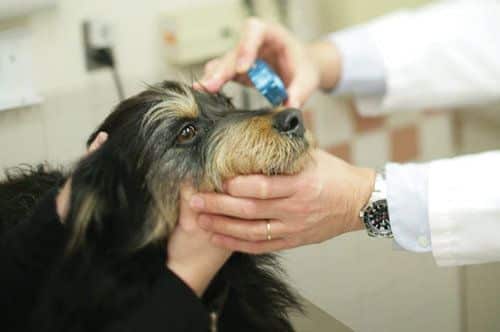Progressive Retinal Atrophy in Dogs
Facts About Progressive Retinal Atrophy in Dogs
Just like humans, pets can suffer from health problems sometimes. This article will focus on one such health problem from which dogs can become afflicted. This problem is progressive retinal atrophy. What is that? What are the symptoms? When should a pet parent seek veterinary care? Are there remedies and/or therapies available? That is precisely what shall be discussed right here.
What Is Progressive Retinal Atrophy?
It is a compilation of several different genetic diseases that culminate in retinal deterioration. That in turn leads to blindness in the dog. When present in a dog, the retina has most likely failed to properly develop; although another cause can be when the light receptor cells in the eye retina of the dog degenerate. Either way, the condition will eventually result in total blindness.
At this point in time, only specific breeds of dogs are susceptible to it. Dr. Ruth MacPete, DVM, provides a list of breeds that are known to carry the genes for the disease. If someone is concerned about whether or not their dog is at risk it is possible for a dog to be tested early on in its life to find out if the PRA gene is present.
What Are Some Symptoms of PRA?
One initial sign of this disease is when a dog has trouble seeing at night. If a dog is of one of the breeds known to suffer from progressive retinal atrophy, be sure to observe his or her behavior closely throughout its life. Look for signs of the dog’s difficulty in seeing in the dark. Another trait is when its pupils seem to constantly be dilated. If PRA is progressing, at some point it will also have difficulty seeing in daylight. Before arriving at this latter stage, it is smart to let the veterinarian examine it.
How to Recognize the Symptoms
So how does one know if the symptoms of PRA are present? After all, dogs can be known for doing some goofy things, right? Some tell-tale signs that he or she is not seeing properly are as follows:
- Does he or she get lost in the dark?
- Does it crash into objects a lot?
- Does it have trouble finding its toys?
- Is it suddenly failing to respond to hand signals?
- Is it now having trouble seeing in bright light?
- Are any of these signs occurring frequently?
If a pet parent answers yes to any of these things, they should definitely seek veterinary help right away.
Are There Any Treatments for This Disease?
As of this time, March of 2020, there are not any treatments available when a dog has the onset of progressive retinal atrophy. According to Adrienne Kruzer, RVT, LVT, experts are trying to introduce gene therapy as a solution. However, this is still in the experimental stage and nothing concrete has yet come out of it. Researchers will keep trying.
Cost to Treat: $2,000 to $3,000 per eye when surgery is necessary
Findings of Specific Clinical Studies on PRA
Over a two-year period, studies were done on some clinical cases of progressive retinal atrophy in dogs. These studies were done in a group of dogs bred in India. Different age groups were represented, as were various breeds of dogs. The dogs’ owners participated in the studies by answering brief questionnaires about their pets’ behavior.
Unfortunately these studies did not present any ideas on treatment once PRA was apparent in the dog. However, they did suggest selective reproductive procedures by owners of at-risk breeds of dogs as a way to alleviate the condition. In other words, people who intend to start a breeding program for dog breeds known to have PRA might be able to have the troublesome genes medically eliminated from the dogs. Then they may proceed with breeding plans. If someone wants to see details of this study, it is available here. They are looking for “Clinical Studies on Progressive Retinal Atrophy in 31 Dogs,” by Iran J Vet Res, Spring of 2017.
Other Important Facts about PRA
Although progressive retinal atrophy is most common in purebred dogs, it can be found in mixed breeds (aka “mutts”) too. There is not any one particular age when the condition could manifest itself. It is also possible for dogs with this affliction to have secondary cataracts. If this happens, the dog can become completely blind more quickly. Other than selective breeding, there is not much that can be done to prevent the condition from occurring.
Taking Care of a Blind Dog
Experts agree that there is no physical discomfort to a dog that has PRA. He or she will not suffer. Therefore, there is NO NEED to euthanize or abandon the dog. It can lead a normal and happy life with a family or individual who truly cares for it. Rhea Morgan, DVM, has some pertinent advice on the best care someone can provide to their dog throughout the remainder of its life. The dog can adapt so well that nobody except the owner will notice its blindness. Meanwhile, they should enjoy a nice long, love-filled life of their dog.
Related Content




















